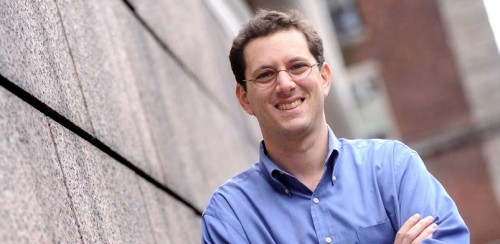Advancing the Science of Climate and Weather Extremes
Each year, in the United States and across the globe, extreme weather and climate events—tornadoes, tropical cyclones, floods, droughts, heat waves, and severe storms—cause widespread loss of life, physical harm, destruction of homes, businesses, and infrastructure, and social, economic, and ecological disruption.
As some of these events seem to increase in frequency, most of us want to know how our lives will be affected. For example, what are the odds of a violent tornado striking New York City? Could another storm like Hurricane Sandy occur, and how can we prepare for it?
Scientists at Lamont study every type of climate and weather extreme, seeking to understand how to quantify and respond to the risks these extreme events pose to human society, both in our present climate, and in the future as the climate warms.
“Each type of extreme event is different, and they have different scientific sub-cultures that study them. We have a broad range of experts working on all the different extremes at Lamont, all doing high-quality work, and all communicating and collaborating with each other. Even more unique is the close connection that our extremes work has to Lamont’s broader effort on basic climate science, one of Lamont’s historical strengths,” atmospheric scientist Adam Sobel said.

Atmospheric scientist Adam Sobel is working with engineers and social scientists from across Columbia University on the development of a research program to study the history and physics of multiple extreme weather and climate events, and how to adapt to them.
In a recent study, Sobel, an expert in the physics of climate and weather, and colleague Timothy M. Hall, a climate scientist at NASA’s Goddard Institute for Space Studies, looked at how common Hurricane Sandy’s impact angle—a Category 1 hurricane coming into the New Jersey coast from the east, rather than the south as typically happens—is expected to be under static climate conditions. They found it to be an extremely rare event, with a return period of approximately 700 years.
Hall and Sobel did not consider the effect of climate change; but another recent study, co-authored by Lamont-Doherty climate analyst Suzana Camargo in Nature, shows that by causing sea level to rise, the warming climate will make coastal flooding events like Sandy more frequent.
As demonstrated by Sandy, public interest in extreme weather and climate events is on the rise. The risk of disasters is increasing as well, due to increasing populations and economic development in risk-prone areas as well as to climate change. While the impacts of steady changes in the present climate are worrying enough, many of the worst impacts of climate change will likely come from extreme events. Evidence is quite strong that some types of extremes, such as heat waves, droughts and rainfall-driven floods, will become more frequent or more intense as a result of warming. What will happen to other forms of extreme weather, such as tornadoes, is highly uncertain and in great need of new research.
Sobel and other climate scientists at Lamont are now working with engineers and social scientists from across Columbia University to develop a more concentrated research program to study the history and physics of multiple extreme weather and climate events and how to adapt to them.
“Extreme events are the leading edge of climate, the part to which human society is most sensitive. They are also the most difficult to predict and understand. Using statistics to study extremes is difficult because, by definition, they are rare events. Using climate models is difficult because they tend to involve small-scale processes that the models don’t resolve well. Scientists need to be creative to understand how extremes are related to the climate in which they occur,” Sobel said.
Ultimately, the understanding and information generated by this research will inform risk assessment, as well as impacts on society, engineering, and legal and policy concerns, and will enable humankind to prepare for the century of intensifying extremes ahead.